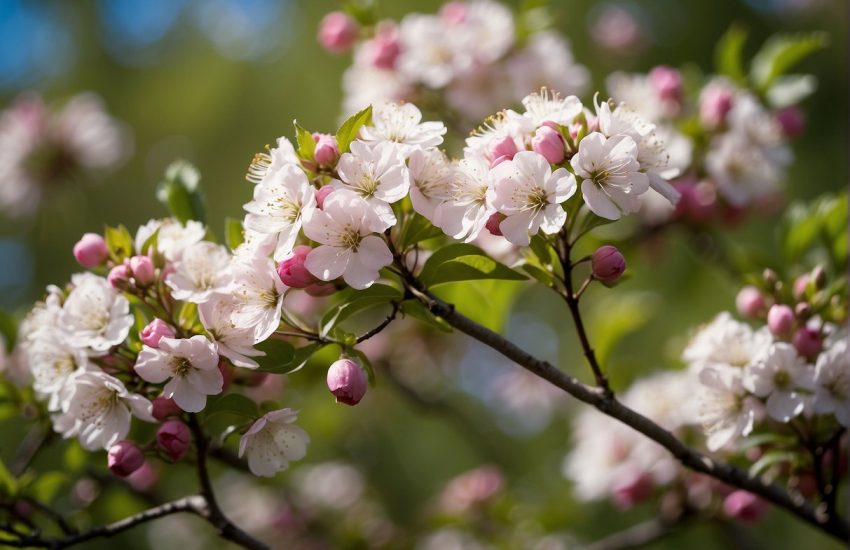Florida Tree with Orange Flowers: A Guide to Identification and Care
Florida is home to a variety of trees that produce beautiful and vibrant flowers. One of the most eye-catching types of trees in the state is the Florida tree with orange flowers. These trees are known for their striking orange blooms that add a pop of color to any landscape.

There are several types of trees in Florida that produce orange flowers, each with its own unique characteristics. Some of the most popular tree species include the Red Silk Cotton Tree, Geiger Tree, and Royal Poinciana Tree. These trees are not only beautiful but also provide important ecological benefits, such as shade and habitat for wildlife.
If you’re looking to add some color to your Florida landscape, consider planting a tree with orange flowers. With so many different species to choose from, you’re sure to find one that suits your needs and preferences. Whether you’re looking for a small ornamental tree or a large shade tree, there’s a Florida tree with orange flowers that’s perfect for you.
Prominent Florida Trees with Orange Flowers
Florida is home to a variety of trees with vibrant orange flowers that bloom throughout the year, adding a splash of color to the landscape. Here are some of the most prominent Florida trees with orange flowers:
Royal Poinciana (Delonix Regia)
The Royal Poinciana is a deciduous tree that produces large, showy, orange-red flowers that resemble flames. It is also known as the flame tree, and it can grow up to 40 feet tall. The Royal Poinciana thrives in full sun and is drought-tolerant, making it an excellent choice for South and Central Florida. It prefers well-drained soil and is hardy in USDA hardiness zones 10-12.
Geiger Tree (Cordia Sebestena)
The Geiger Tree is an evergreen tree that produces clusters of bright orange flowers that bloom year-round. It is a small to medium-sized tree that can grow up to 25 feet tall and has a dense, round canopy. The Geiger Tree is an ideal shade tree and is drought-tolerant. It prefers well-drained soil and is hardy in USDA hardiness zones 10-11.
African Tulip Tree (Spathodea Campanulata)
The African Tulip Tree is a deciduous tree that produces large, bell-shaped, orange-red flowers that bloom in clusters. It can grow up to 80 feet tall and prefers full sun. The African Tulip Tree is drought-tolerant and prefers well-drained soil. It is hardy in USDA hardiness zones 10-12.
Flame of the Forest (Butea Monosperma)
The Flame of the Forest is a deciduous tree that produces bright orange-red flowers that bloom in clusters. It can grow up to 50 feet tall and prefers full sun. The Flame of the Forest is drought-tolerant and prefers well-drained soil. It is hardy in USDA hardiness zones 10-12.
These Florida trees with orange flowers are perfect for adding a splash of color to any landscape. Whether you are looking for a shade tree or a drought-tolerant option, there is a tree on this list that will meet your needs.
Caring for Orange-Flowering Trees
Orange-flowering trees can add a vibrant splash of color to any landscape. To keep these trees healthy and blooming, proper care is essential. Here are some tips on caring for orange-flowering trees.
Soil and Planting Requirements
Orange-flowering trees grow best in well-drained soil with a pH range of 6.0 to 7.0. Before planting, it is important to ensure that the soil is properly amended to meet these requirements. Adding organic matter such as compost or peat moss can help improve soil structure and fertility. When planting, make sure to dig a hole that is at least twice the width of the root ball. This will give the roots plenty of room to spread out and establish themselves.
Sunlight and Temperature Needs
Most orange-flowering trees require full sun to thrive. They can tolerate some shade, but too much shade can lead to reduced flower production. In terms of temperature, these trees are generally frost-sensitive and prefer warm climates. Some varieties, such as the Geiger tree, are drought-tolerant and can withstand periods of low rainfall.
Watering and Maintenance Tips
When it comes to watering, orange-flowering trees require regular moisture to maintain healthy growth and flower production. However, it is important not to overwater, as this can lead to root rot and other issues. A good rule of thumb is to water deeply once a week, allowing the soil to dry out slightly between waterings.
In terms of maintenance, it is important to prune orange-flowering trees regularly to promote healthy growth and shape. Dead or damaged branches should be removed promptly to prevent disease. Fertilizing with a balanced fertilizer can also help promote healthy growth and flower production.
Overall, caring for orange-flowering trees requires attention to soil, sunlight, water, and maintenance needs. With proper care, these trees can add beauty and color to any landscape.


